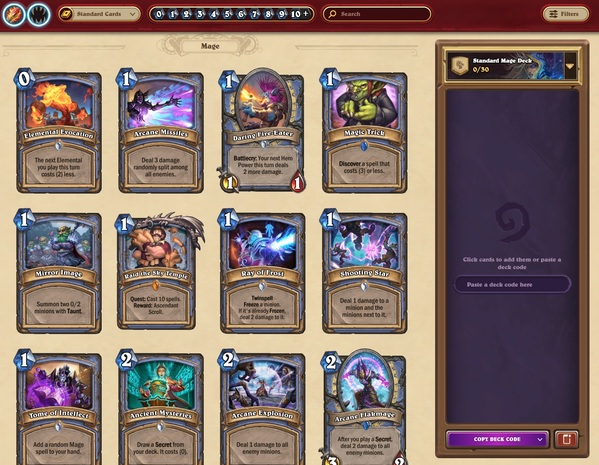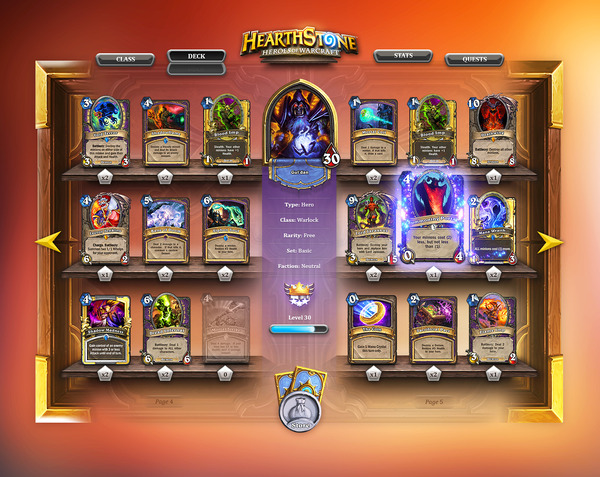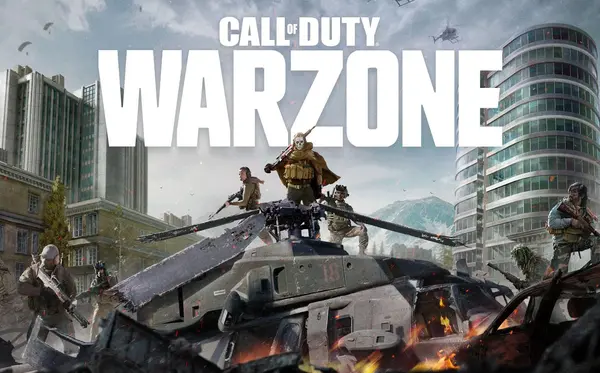Hearthstone is a digital card game that has captivated millions of players worldwide with its strategic depth and fast-paced gameplay. One of the core aspects that sets Hearthstone apart from other card games is the intricate process of deck building. While it may seem straightforward to throw together a collection of powerful cards, the nuances of constructing an optimized deck go much deeper. This guide focuses specifically on how to master the art of deck building, exploring strategies and concepts that will elevate your gameplay to the next level.
Building a strong deck in Hearthstone requires understanding card synergies, metagame shifts, and class strengths. This article will delve into each of these factors and explain how to craft a competitive deck, step by step.
Understanding Card Synergies
The foundation of any strong Hearthstone deck lies in card synergies. Synergy refers to how cards interact with one another to create a stronger effect than if they were used individually.
H3: Identifying Core Synergies
When building your deck, focus on identifying core synergies between cards. For example, if you’re building a Murloc deck, cards like "Murloc Warleader" and "Grimscale Oracle" work well together to buff your Murlocs, allowing for more aggressive plays. Recognizing these interactions is essential for constructing a cohesive strategy.
H4: Strengthening Archetypes
Each class in Hearthstone has its own archetypes, such as control, aggro, or combo. Focus on cards that fit your chosen archetype. If you are playing a control deck, include removal spells like "Fireball" for Mage or "Execute" for Warrior to manage the board. Tailor your synergies to match the strengths of your archetype.
Class Strengths and Weaknesses
Choosing the right class for your deck is crucial. Each class in Hearthstone has unique strengths and weaknesses, and understanding these characteristics will help guide your deck-building decisions.
H3: The Power of Mage
Mage is known for its powerful spell-slinging capabilities, making it an excellent choice for control decks. Cards like "Frostbolt," "Fireball," and "Polymorph" provide essential removal, while "Arcane Intellect" helps you maintain card advantage. Mage excels at stalling the game and gaining control of the board.
H4: The Strength of Druid
Druid's ability to ramp up mana quickly with cards like "Wild Growth" and "Innervate" allows it to summon large minions faster than other classes. Druid decks often focus on powerful end-game threats like "Cenarius" or "Ironbark Protector," creating overwhelming pressure on opponents.
Balancing Mana Curve
A balanced mana curve is essential for a functional deck. It refers to the distribution of card costs in your deck, ensuring that you have options to play at every stage of the game.
H3: Early, Mid, and Late Game
In the early game, you need cheap cards to establish board control. Cards like "Argent Squire" or "Northshire Cleric" can help you gain an early advantage. Mid-game cards like "Chillwind Yeti" or "Azure Drake" ensure you maintain pressure, while late-game bombs like "Ragnaros the Firelord" can finish the match.
H4: Avoiding Dead Hands
If your mana curve is skewed too heavily towards high-cost cards, you may find yourself with a dead hand, unable to play any cards in the early turns. A good deck includes a mix of low, mid, and high-cost cards, ensuring you can always play something.
Tech Cards and the Meta
The metagame, or "meta," refers to the current environment of popular decks and strategies in Hearthstone. Including tech cards that counter the most prevalent strategies is an advanced deck-building technique.
H3: Identifying the Meta
To build a competitive deck, you must understand the current meta. Are aggro decks dominating, or is the ladder filled with control decks? Knowing this will guide your card choices. For example, if aggro decks are popular, include cards like "Doomsayer" or "Wild Pyromancer" to help control the board.
H4: Adapting to Meta Shifts
The meta in Hearthstone is constantly evolving due to balance changes and new expansions. Be prepared to adapt your deck by swapping out tech cards as the meta shifts. Flexibility is key to staying competitive.
Card Draw and Resource Management
Card draw is a vital aspect of deck building. Without consistent card draw, you may run out of options, leaving you with no plays.
H3: Key Draw Mechanics
Classes like Mage, Warlock, and Priest have reliable card draw options. Cards like "Arcane Intellect" and "Northshire Cleric" keep your hand full, allowing you to maintain pressure or respond to your opponent's plays.
H4: Managing Resources
Efficient resource management means knowing when to hold back cards and when to play aggressively. Playing all your cards too quickly can leave you vulnerable, while holding onto powerful cards can swing the game in your favor later on.
Board Control and Tempo
Board control and tempo are central concepts in Hearthstone that determine the pace and flow of the game. A deck that can effectively control the board is often the one that wins.
H3: Tempo-Based Strategies
Tempo decks focus on playing cards that generate immediate value, forcing your opponent to react. A card like "SI:7 Agent" in Rogue not only deals damage but also leaves a body on the board, helping you maintain tempo.
H4: Board Wipes and Comebacks
Control decks often rely on board wipes like "Brawl" for Warrior or "Flamestrike" for Mage to reset the game. Knowing when to use these powerful cards can help you turn the tide when your opponent has overwhelming board presence.
Win Conditions and Finishing the Game
Every deck needs a win condition—a way to close out the game. Whether it's overwhelming your opponent with minions or executing a combo, having a clear path to victory is essential.
H3: Direct Damage Spells
For many decks, direct damage spells like "Fireball" or "Kill Command" provide a way to deal the last points of damage to your opponent. Including a few of these can help you finish off opponents when they are low on health.
H4: Minion-Based Win Conditions
For minion-heavy decks, your win condition might involve building an overwhelming board that your opponent can't deal with. Cards like "Savannah Highmane" for Hunter or "Bloodlust" for Shaman can lead to a decisive win when timed correctly.
Mulligan Strategy
Mulliganing, or choosing which cards to keep at the start of the game, is a critical aspect of deck building. A good mulligan can set the stage for the entire game.
H3: Knowing What to Keep
In general, you want to keep low-cost cards that allow you to establish early board presence. If you are playing an aggro deck, prioritize one-drop and two-drop minions. For control decks, keeping removal spells or early-game defensive minions is key.
H4: Tailoring Mulligans to the Opponent
Your mulligan strategy should change depending on the class you're facing. Against aggressive decks, keep removal spells. Against control decks, focus on card draw and value-generating minions.
Sideboard and Tournament Play
In tournament play, having a sideboard—an extra set of cards that can be swapped in between games—is crucial. While Hearthstone doesn’t have a formal sideboard system in ladder play, the concept is still useful for deck building.
H3: Adapting for Specific Matchups
Knowing your opponent's deck and adapting your strategy is key in tournaments. Bringing tech cards that counter specific strategies will give you an edge in these matchups.
H4: Practice and Iteration
The best way to improve your deck building is through practice. Playtest your deck against a variety of opponents, note weaknesses, and make adjustments. The more you iterate, the stronger your deck will become.
Conclusion
Mastering the art of deck building in
Hearthstone is an ongoing process that requires a deep understanding of card synergies, class strengths, and the evolving meta. By focusing on these core concepts and continually refining your approach, you'll be able to build competitive decks that can adapt to any challenge. Remember that success in Hearthstone comes from both strategic deck building and execution during gameplay.





















